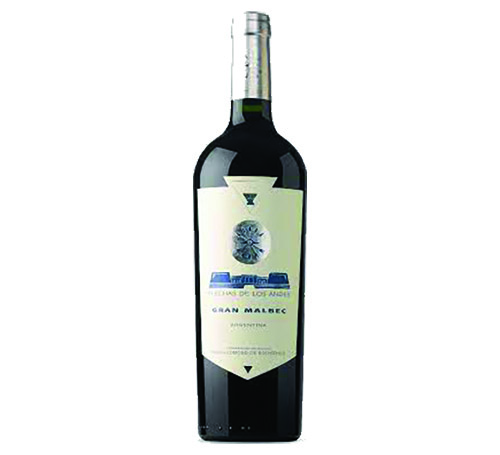



As the kosher wine world has become more sophisticated, so have the opportunities to taste wines made from many different types of grapes. While many in the non-kosher wine world might not find the malbec grape particularly unique or interesting, I do because there just aren’t that many kosher single varietal malbecs around. We have hundreds of cabernet sauvignons, merlots and chardonnays to choose from, but kosher malbecs on the ground are a bit thinner. So it was an opportunity for my group, on a recent summer evening, to gather 11 kosher malbecs—as many we could reasonably find—and taste our way through them in an attempt to enjoy and understand this slightly lesser-known varietal wine.
Malbec originated in France as a Bordeaux grape (often blended with petit verdot and merlot), but only realized its true potential as a single varietal wine when matched with the unique climate and terroir of Argentina, with Mendoza as its premium region. While it’s not one of the six noble grapes—the ones we’ve all heard of most often (cabernet sauvignon, merlot, pinot noir, chardonnay, riesling and sauvignon blanc) that are generally grown easily and with good, if differing attributes throughout the world—malbec nonetheless has become a world-class standard as a bold and fun red wine, with more fruit and fewer tannins or mouth-puckering dryness.
Possibly it can be seen generally as a less expensive and less intense form of cabernet sauvignon or syrah. It certainly pairs really well with barbecued foods. “Maybe it’s a ‘baby merlot’,” Yeruchum mused, as our group discussed what characteristics make malbec unique. After tasting through our wines, Shannon still thought the jury was out. After trying kosher wines from three continents, her thought was: “The kosher wine world is still developing its malbec.”
We hope you try some of these and decide for yourself.
The Argentinian-made Rothschild Flechas de Los Andes Gran Malbec 2019 is widely considered the gold standard in kosher malbec. Made in Mendoza, the region in Argentina that made malbec famous, the wine is the result of a collaboration between Baron Benjamin de Rothschild and Laurent Dassault, and presents a luscious dark-ruby wine with notes of red and blue fruit, chocolate, smoke and oak, along with beautiful, soft tannins. At just $25, this wine is a great buy and is reliably great from year to year. “This is the classic malbec. It has really nice spice, and the fruit is very well integrated and balanced,” said Shannon.
We also greatly enjoyed the Twin Suns Reserve Malbec 2018, made with Monterey, California grapes by Gabriel and Shimon Weiss. This wine has real heft, in a good way, with deep color, flavors of dark red fruits, tobacco and a lovely and sustained finish. It is a tour de force and consistent with the way the Weiss brothers make wine; they work to bring out the best from the high-end grapes they use, and then they use their skills with aging and bottling until they deliver a truly delicious product. At $28, we find this wine very well priced and a good value.
Another high point of our tasting was the Psagot Malbec 2019. “The fruit here packs a punch, but it is more disciplined and structured,” said Greg. This was a very fruit-forward wine, with essences of blackberry, raspberry, black plum and black cherry. The “fruit-bomb” experience for which Israeli reds are sometimes known was in evidence here (not that there’s anything wrong with that!). At $32, it’s a little more pricey than the other wines, but it’s a fun wine and a slightly more affordable alternative, though no less pleasing, than Psagot’s other varied red wine selections.
We also greatly enjoyed the Hadju Malbec 2019, from San Benito County, California, which was donated to our tasting from Ari’s cellar, as there were no bottles on local shelves to be found. This malbec was different from the others in that it had a nose of eucalyptus and mint along with its red berry and restrained oak notes; this provided a distinct experience from the other malbecs in our tasting. Winemaker Jonathan Hajdu continually creates unique, exciting and interesting single varietals, and while one certainly has to seek them out (either via club purchases or direct from the web, with some released for retail, and these all generally range between $45 and $50), it is almost always worth the effort. “It’s good, but it needs another year in the bottle to age,” said Ari. Yeruchum also compared this malbec to a rich cabernet franc, and noted he was so thrown by the eucalyptus nose that he was not sure he would have identified it as a malbec. “I just have to keep tasting it to be sure,” he joked.
Finally, I want to mention the Herzog Lineage Malbec 2019, which retails at around $18. This wine needs some time to open up, but when it does, it’s plummy, with a nose of blackberry and red cherry, with a pleasing finish and some feather-light tannins. The wine did not show as well as the others in this particular tasting, but I maintain this is a wine that can be enjoyed very much after it has been exposed to a bit of air. I noticed this after opening it on a Friday night and setting it aside, only to look for it again on Tuesday to see how it was doing. It was worth the wait.
By Elizabeth Kratz








